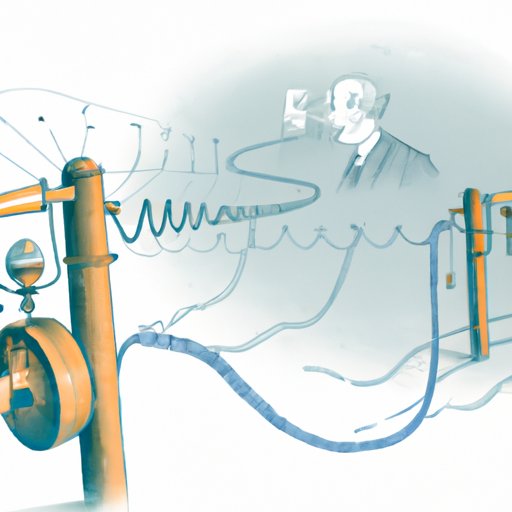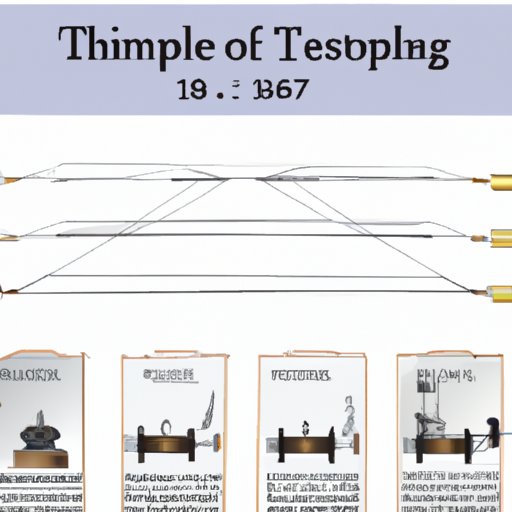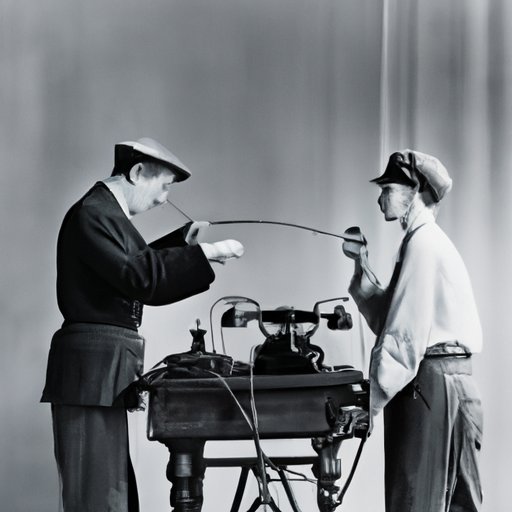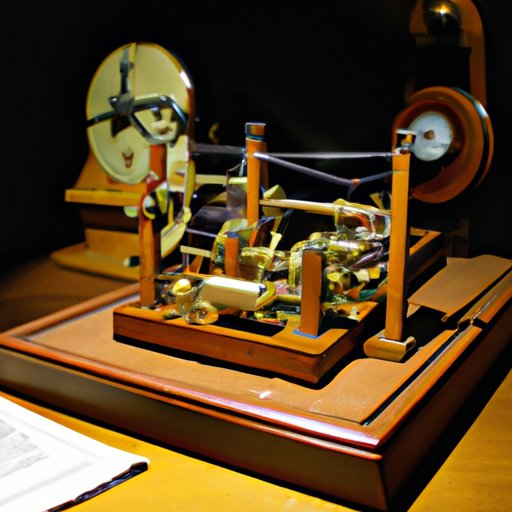Introduction
The telegraph is one of the most important inventions in the history of communication. It revolutionized how people communicated with one another over long distances, allowing them to send messages almost instantaneously. But when was the first telegraph invented? This article takes an in-depth look at the history of the telegraph and the milestones achieved by this revolutionary technology.
A Historical Look at the Invention of the Telegraph
In order to understand when the first telegraph was invented, it’s necessary to take a look at the history of communication. For centuries, people relied on couriers and postal services to deliver messages over long distances. This type of communication was slow and unreliable, often taking days or even weeks for a message to reach its intended recipient.
In the early 19th century, inventors began experimenting with ways to send signals over long distances using electricity. One of the most famous of these inventors was Samuel Morse, who developed the first practical telegraph system. He patented his invention in 1837 and began testing it in 1844.

Following the Path of Innovation: The First Telegraph
Morse and other inventors recognized that electricity could be used to send signals over long distances. To make this possible, they developed the Morse code, which used combinations of short and long signals to represent letters of the alphabet. This made it possible to send messages quickly and accurately over long distances.
On May 24th, 1844, Morse sent the first message via telegraph from Washington DC to Baltimore. The message read “What hath God wrought?” and was received by Alfred Vail, Morse’s assistant. This marked the beginning of a new era in communication.
An In-Depth Exploration of the First Telegraph
The first telegraph was composed of several components. It included an electromagnetic relay, which allowed the signal to be amplified and sent over greater distances. It also had a sounder, which could detect and interpret the signals sent by the operator. Finally, there was a power source, such as a battery, to provide the electricity needed for the system to work.
The telegraph operated by sending electrical pulses through the wires. These pulses would activate the relay, producing a clicking sound. The sounder would then interpret the sound into letters of the alphabet, allowing the operator to decode the message.

A Timeline of the Invention of the Telegraph
The invention of the telegraph was a gradual process, involving many key events along the way. Below is a timeline of some of the major milestones that led to the invention of the telegraph.
- 1753 – Benjamin Franklin discovers that lightning is electricity.
- 1800 – Alessandro Volta invents the voltaic pile, the first battery.
- 1820 – Hans Christian Oersted discovers that electricity can produce a magnetic field.
- 1832 – Joseph Henry invents the electromagnet.
- 1837 – Samuel Morse patents the telegraph.
- 1844 – Morse sends the first message via telegraph.
- 1866 – The Transatlantic cable is completed, allowing transatlantic communication.
- 1876 – Alexander Graham Bell invents the telephone.

Examining the Impact of the Telegraph on Communication
The invention of the telegraph has had a profound effect on modern communication. It revolutionized business and industry, allowing companies to send messages quickly and efficiently. It also transformed personal communications, allowing people to stay in touch with distant family and friends.
It has been estimated that the telegraph increased the speed of communication by a factor of 10,000. According to a study conducted by the University of California, “The introduction of the telegraph changed the world from one where news spread slowly over weeks and months to one where news could be transmitted nearly instantaneously.”
Conclusion
The invention of the telegraph was a major milestone in the history of communication. It allowed people to send messages quickly and accurately over long distances, revolutionizing how we communicate with one another. This article has provided an in-depth look at the history of the telegraph, from its early beginnings to its impact on modern society.
(Note: Is this article not meeting your expectations? Do you have knowledge or insights to share? Unlock new opportunities and expand your reach by joining our authors team. Click Registration to join us and share your expertise with our readers.)
